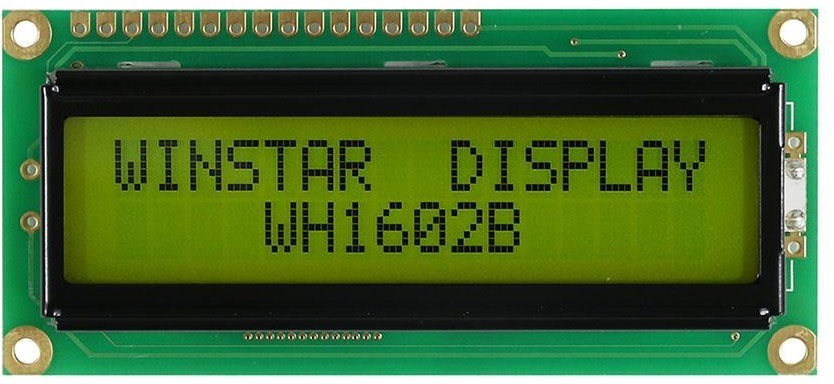LCD (Liquid Crystal Display)
A simple LCD (Liquid Crystal Display) is a flat-panel display technology commonly used in electronic devices to show alphanumeric characters, symbols, or graphics. It works by using liquid crystals, which are substances that can change their optical properties when an electric current is applied, allowing for the display of information. LCDs are often used in devices like calculators, clocks, handheld game consoles, and other small electronic gadgets due to their low power consumption, compact size, and relatively low cost.
The basic structure of an LCD consists of two layers of polarizing material with a liquid crystal solution sandwiched between them. These liquid crystals align in response to electrical fields, affecting the way light passes through them. A backlight or reflector is usually placed behind the display to illuminate the screen, as the liquid crystals themselves do not emit light. The combination of the polarizing layers and liquid crystals allows the display to control light passing through, creating visible characters or images. In a simple LCD, each character or image is displayed in a grid of pixels, with each pixel representing a tiny portion of the overall image.
One of the most common types of simple LCDs is the alphanumeric display, which shows characters (letters and numbers) and basic symbols, typically arranged in rows and columns. These displays are often used for applications where only basic text output is needed, such as displaying the time on a clock, showing temperature readings, or providing information in small electronic devices. The LCD's screen can be divided into a set number of segments, where each segment can either be on or off, thus forming the shape of characters or symbols.
Simple LCDs can be driven by a microcontroller or similar device, which sends control signals to the display, adjusting the pixels to form the desired output. Most simple LCDs are either monochrome (black and white) or use limited colors, with black text on a light background being the most common configuration. They are more energy-efficient than older display technologies like cathode ray tube (CRT) screens because they consume very little power, especially when displaying static images.
Overall, simple LCDs offer a straightforward, reliable way to display information in electronic products, making them a crucial component in many devices that require a user interface without the complexity or cost of advanced graphical displays.
The basic structure of an LCD consists of two layers of polarizing material with a liquid crystal solution sandwiched between them. These liquid crystals align in response to electrical fields, affecting the way light passes through them. A backlight or reflector is usually placed behind the display to illuminate the screen, as the liquid crystals themselves do not emit light. The combination of the polarizing layers and liquid crystals allows the display to control light passing through, creating visible characters or images. In a simple LCD, each character or image is displayed in a grid of pixels, with each pixel representing a tiny portion of the overall image.
One of the most common types of simple LCDs is the alphanumeric display, which shows characters (letters and numbers) and basic symbols, typically arranged in rows and columns. These displays are often used for applications where only basic text output is needed, such as displaying the time on a clock, showing temperature readings, or providing information in small electronic devices. The LCD's screen can be divided into a set number of segments, where each segment can either be on or off, thus forming the shape of characters or symbols.
Simple LCDs can be driven by a microcontroller or similar device, which sends control signals to the display, adjusting the pixels to form the desired output. Most simple LCDs are either monochrome (black and white) or use limited colors, with black text on a light background being the most common configuration. They are more energy-efficient than older display technologies like cathode ray tube (CRT) screens because they consume very little power, especially when displaying static images.
Overall, simple LCDs offer a straightforward, reliable way to display information in electronic products, making them a crucial component in many devices that require a user interface without the complexity or cost of advanced graphical displays.
